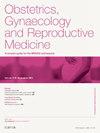与分娩有关的会阴创伤及其并发症:发病率、风险因素和处理方法
Q3 Medicine
Obstetrics, Gynaecology and Reproductive Medicine
Pub Date : 2024-06-19
DOI:10.1016/j.ogrm.2024.06.003
引用次数: 0
摘要
阴道分娩后,与分娩相关的会阴创伤极为常见。有限的证据表明,伤口感染或裂开等后续并发症经常发生,但旨在改善这一庞大妇女群体预后的干预措施仍然很少。在此,我们回顾了产后不同类型的撕裂、其发生率、风险因素、并发症和最佳处理方法,并探讨了当前建议和实践所依据的证据。本文章由计算机程序翻译,如有差异,请以英文原文为准。
Childbirth-related perineal trauma and its complications: prevalence, risk factors and management
Childbirth related perineal trauma is extremely common after vaginal birth. Limited evidence suggests that subsequent complications such as wound infection or dehiscence occur frequently, yet interventions aimed at improving outcomes in this large group of women remain scarce. Here, we review the different types of tear after childbirth, their prevalence, risk factors, complications and best management, as well as exploring the evidence underlying current recommendations and practice.
求助全文
通过发布文献求助,成功后即可免费获取论文全文。
去求助
来源期刊

Obstetrics, Gynaecology and Reproductive Medicine
Medicine-Obstetrics and Gynecology
CiteScore
0.90
自引率
0.00%
发文量
67
期刊介绍:
Obstetrics, Gynaecology and Reproductive Medicine is an authoritative and comprehensive resource that provides all obstetricians, gynaecologists and specialists in reproductive medicine with up-to-date reviews on all aspects of obstetrics and gynaecology. Over a 3-year cycle of 36 issues, the emphasis of the journal is on the clear and concise presentation of information of direct clinical relevance to specialists in the field and candidates studying for MRCOG Part II. Each issue contains review articles on obstetric and gynaecological topics. The journal is invaluable for obstetricians, gynaecologists and reproductive medicine specialists, in their role as trainers of MRCOG candidates and in keeping up to date across the broad span of the subject area.
 求助内容:
求助内容: 应助结果提醒方式:
应助结果提醒方式:


